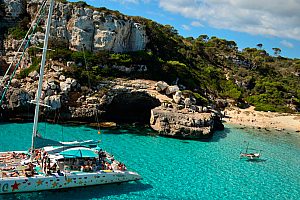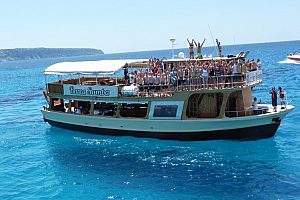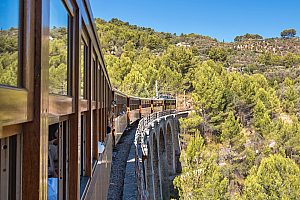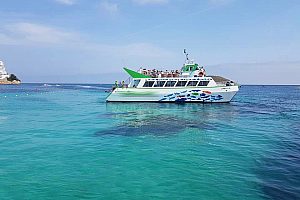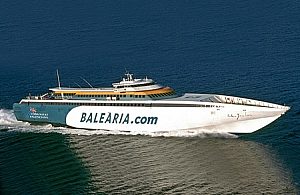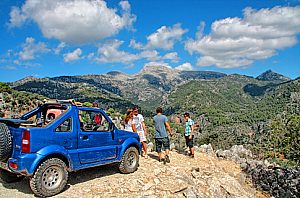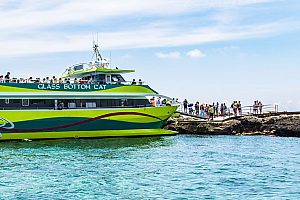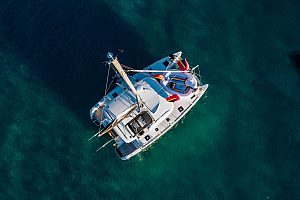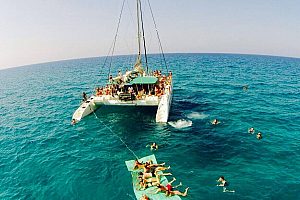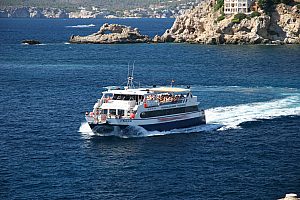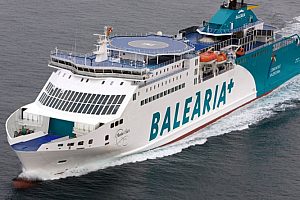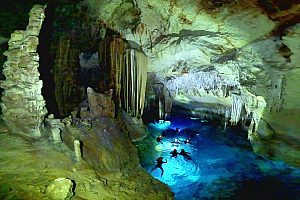
The almond blossom on Mallorca and the beautiful buzz
If you're holidaying in Mallorca at the time of the almond blossom, be prepared for a bit of a rush. The sight of the white and pink blossoms and especially their lovely fragrance have a euphoric effect. Luckily for Mallorca. Because the almond blossom, and with it the low season, is becoming more and more of a tourist season. Those who feel connected to nature do not want to miss this event and also book their Mallorca holiday in winter - directly at the time of the almond blossom.
The island is in a different mood at this time of year, calmer, more serene, greener. It is mild and there is often enough sun for hiking, cycling and other activities. The almond blossom on Mallorca usually lasts from the end of January to the beginning/middle of March. But when the natural spectacle actually begins and how long it lasts depends on the weather and temperatures of the respective winter. Depending on the region of Mallorca, the almond trees also blossom at different times. And beware: there have been years when the almond blossom was premature at the beginning/middle of January and everything was over in February.
Hopefully this will not be the case for the almond blossom on Mallorca in 2021, but the first indications are that it could be quick this time too. With daytime temperatures of up to 20 degrees, December 2019 was warmer than it has been for a long time. This also pushed the almond blossom out of hiding early. The first trees with delicate blossoms were already sighted in the centre of the island around Porreres during the Christmas holidays and increased in number at the turn of the year. This means that the almond blossom on Mallorca 2021 should conquer the landscape quite early.
Where is the almond blossom most beautiful on Mallorca:
Tip 1: Almond Tree Hotspots

When is the best time for the almond blossom on Mallorca: Here you have to be a little flexible and well informed before departure. The almond blossom can start early in January, but depending on the weather it can also last until February. The delicate almond blossoms only burst into bloom at a constant double-digit temperature. The blossoms in the somewhat milder east or in the centre of the island are traditionally somewhat quicker than the blossoms in the western mountain regions, where it is usually even cooler. For orientation: the period for almond blossom on Mallorca is from the middle/end of January to the beginning of March. You are relatively certain to encounter the almond blossom if you visit Mallorca at the beginning of February.
4. Hikes during the almond blossom on Mallorca:
- 1. Monastry Lluc - The hike around the Lluc Monastery becomes a special event during the almond blossom. Depending on your physical condition and hiking mood, you can hike in small or large groups around the spiritual centre of the island. As Lluc is already 525 metres above sea level, the view of the almond trees is a bit intoxicating.
- 2. Galilea - Around the tranquil mountain village of Galilea there may not be the most almond trees, but they are on slopes and terraces and it is truly pretty to look at. Moreover, a hike in the midst of the almond trees is a great place to have a picnic. The route from Galilea leads along a cart track to Es Capdella and takes around 3.5 hours.
- 3. Randa - Hike up the Randa monastery mountain - from the very top, you can probably best appreciate the extent of the almond euphoria. At an altitude of around 550 metres, the sea of colours of the almond blossom in the valley unfolds its special effect and any exertion of this hike is forgotten. It takes about 3 hours to walk from Llucmajor to the Three Monasteries Mountain - plan a little longer if you can't get enough of the blossoms or if you often find yourself gazing at the landscape.
- 4. Andratx - If you are heading southwest, make your way from Andratx to Port Andratx and look forward to countless almond trees and the approaching sea on the approximately 6-kilometre route.
Almond products made in Mallorca:

Turron und Almond cake
Almond blossom - the scent of the island
If you can't get enough of the almond blossoms on Mallorca and don't want to miss the scent, you can take both home with you in a bottle: "Flor d'Ametler" is the magic word and describes the unique almond perfume from the island. It has been produced since 1930 and preserves spring in the bottle. More than 70 years ago, the Mallorcan Bernardo Vallori had the idea of immortalising the scent of the almond blossom he loved in a perfume. He remembered how his mother and grandmother used to mix rosemary, lavender, sage and mint into their perfumes and the miraculous effect they had. Vallori refined the method and experimented with the almond blossom until the result really deserved the name "Flor d'Ametler".
To this day, the perfume is still produced by hand in the family business in Pont d'Inca (Marratxi) according to the secret recipe. When the miracle of the almond blossom repeats itself in January and February, the flower gatherers swarm out. Each almond blossom is carefully selected and hand-picked, then immediately placed in a secret essence so as not to lose any of its sweet, fresh fragrance. In addition to the perfume, a five-petalled blossom is placed in each bottle as decoration and greeting. The perfume workshop can also be visited. Contact: 0034 971 601 510 / info@flordametler.com.
Genuine handicraft - almond harvest
The almonds are harvested in midsummer and early autumn and often this is still pure manual labour. The nets are spread out in the plantations and the farmers shake the trees with long poles until the precious fruit falls to the ground. In the meantime, however, more and more mechanised tree shakers are taking over this hard work. As with the almond blossom, there are guided tours and tours on the plantations especially for people interested in the almond harvest.
Around 1000 tonnes of almonds were harvested on Mallorca in 2019 - this was a drop of almost 20 percent compared to the year before and it also has consequences for the island's economy. Until a few years ago, Mallorca was considered the most important almond producer in Spain. The island has already had to relinquish this rank. Because of competition from California and falling world market prices, fewer almonds were produced on the island. Climate change and pests have also contributed to the general decline in the almond harvest. The so-called fire bacterium has already attacked numerous trees on the island and caused them to die of thirst - it prevents the trees from absorbing water.
Experts and almond farmers do not want to wait for the almond to disappear from the island. So the trees are being monitored, new ones are being planted and, above all, varieties that develop resistance to the fire bacterium are being promoted.
How Mallorca became the Almond Island
For 300 years, the Moors ruled Mallorca. In addition to some prosperity and many ideas for the irrigation system, among other things, they also brought the almond tree to Mallorca. That was in the 10th century. However, almond cultivation on the island did not really blossom until 1890, the time of the phylloxera plague. The pest destroyed almost all the vines on the island and many winegrowers had no choice but to turn to other crops. The almond was now cultivated on a large scale and Mallorca soon became the largest contiguous almond-growing area.
At the same time, the almond became one of the most important trade goods - an export hit. The island also owes this success to the special aroma of the Majorca almond. With a slightly sweet, aromatic note and a higher fat content, the local fruit differs from the competition from California, for example. If you want to be sure you've got a Mallorcan almond, look for the "Almendra Mallorquina" quality seal when you buy one.
Events for the almond blossom on Mallorca
The Mallorcans love and celebrate their almond tree. Always on the first Sunday in February, the "Firó de la Flor d'Amtler" is celebrated in Son Severa (east) - the almond blossom festival. If you look around the stalls there, you will get an idea of how many products are (or can be) made from the almond itself, the wood of the tree or the blossom - let me tell you this much: it is a lot. A week after Son Severa, the town of Petra also pays homage to the almond blossom on Mallorca with a spring festival.
Bestsellers Mallorca
Maybe you are interested in the following activities and tours:

